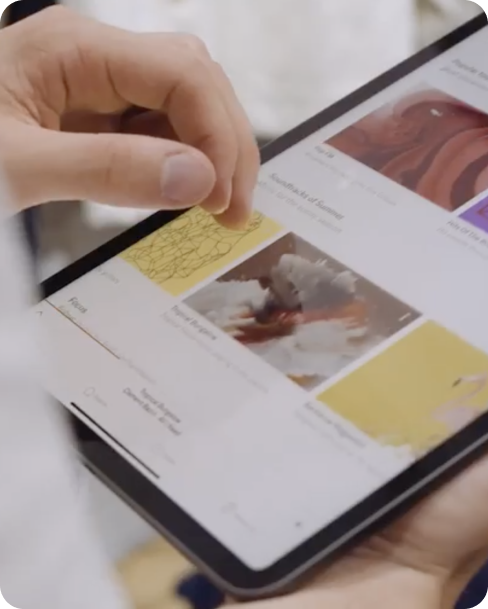Research
Behind everything we do, there's research, science and stats. From global restaurant chains to international retailers, these customer studies show the real numbers behind our mission to make brand fit music a highly effective part of any business.

Staying longer, purchasing more
Our research has helped explore the relationship between background music, brand identity and customer behavior. Dive into the numbers and takeaways to see the bigger picture for yourself, how music that matches your brand's characteristics can uplift sales, influence how your guests shop, dine, and even remember specific things about your experience.
Gant
Founded in the US and with over 500 stores around the world, this customer study looked at the difference in Gant's sales and the time their customers spent in store when they heard music chosen to fit the brand, random music, or no music at all.
Sales increased by an average of 37% when brand-fit music was played, instead of random music.
Customers spent around 42% more time in the store when any kind of music was playing
Customers stay only 1.6% longer in the store when the music was chosen to fit the brand, and not random
But sales increased by an average of 37% when brand fit music was played instead of random music
Read the full study
Over 600 observations and 200 questionnaire responses revealed that the brand fit music increased customers' overall satisfaction with the in-store experience, improved their perception of the physical space, and reinforced positive associations with the Gant brand - all of which translated into higher sales.
Global restaurant chain
We can't mention their name, but they're exactly who you're thinking of. Analyzing 1.8 million purchases across 16 restaurants over five months, this customer study for one of the world's most well known restaurant chains looked at the effects of brand fit music, random hits, and no music in eight high traffic locations. It compares sales when brand fit playlists only contain well known songs against playlists containing a mix.
Tailoring music to their brand helps sales, while playing random hits can hurt. Mixing hits and lesser known songs gives better results than popular songs alone.
Sales decreased by 4.3% when random hits were played compared to no music at all
Sales jumped 9.1% when customers heard a mix of hits and lesser known songs chosen to fit the brand, compared to playlists that contained only random hits
Playlists mixing popular and lesser known artists resulted in sales volumes 3.6% higher than only playing brand fit hits
Purchases of desserts went up 15.6% when the playlist fit the brand, and mixed popular and obscure songs
Read the full study
Music reflecting the brand's values reassured diners that they were in the right place, and gave them the confidence to purchase. Playing random music (even popular songs) without matching the brand created an uncomfortable disconnect between what customers had seen and heard, and what they expected.
Filippa K
This customer study examined the effect on sales when employees of the Scandinavian clothing retailer could change the energy level and volume of songs. Running for 56 weeks, four stores had their playlists and volume controlled by Fillipa K management, aligned with the characteristics of the brand. In the other four stores, staff could only choose between two playlists that differed only in the music's intensity.
Sales were 6% higher when management chose the energy level and volume of the music
Employees tended to select higher energy playlists, skipped slower songs within those playlists, and played music at a higher volume
Music that fit the brand across the board (including intensity and volume) meant a 6% greater sales revenue than when the intensity and volume were too high
If the employees had been able to choose even more of the music's characteristics or if the music were random, the difference in sales would likely have been greater
Read the full study
While employees preferred more intense music at higher volumes, this didn't fit the brand and situation, and it hurt sales. The numbers suggest the benefits of having centralized control over music in stores. Scheduling the right music ahead of time allowed staff to focus more on their customers, too.
MRC Data
How much does background music really matter? What customer behavior does it affect? MRC Data (formerly Nielsen Music) interview more than 2,500 people to dive into the relationship between music and business, and what it means for particular industries.
For 39% of the U.S. population, the right music influences repeat business at a retailer.
54.9% of Americans have stayed longer at a business location because of the music
41% of U.S. consumers would spend more time and money in a retail location if they're enjoying the music
The top businesses where music influences preference are bars and pubs, restaurants, coffee shops, shopping malls and gyms
See how it impacts you
Want to see the study broken down by industry?
We’ve put together one page summaries with just what’s relevant, at a glance and print friendly.